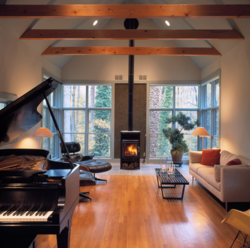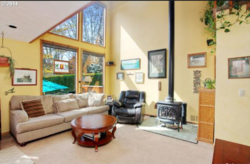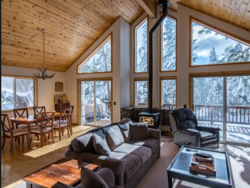My husband and I are building a house ourselves and are trying to decide on a wood stove. My question isn't so much about model or what is best, but about whether or not you can frame a fireplace around a wood stove pipe without a masonry chimney - realizing the specifications and clearance will be dependent on the stove. I'm gathering this would include an insulated double walled pipe, but can you box that in so that the pipe appears to go up into the dry walled "chimney"?
I see photos of this done all the time, but in contacting a local wood stove distributor, they told me that this was not possible and that we would have to have the pipe exposed all the way up our 22 foot ceiling (there is a covered wrap around porch so the wood stove would have to be vented out of the roof). I also asked about a zero clearance insert - and they told me I would have to have a masonry chimney for that.The same distributor also told me that people who frame in and cover a pipe using durock for insulation are experiencing crumbling years down the road.
It is a one story house, 2,400 sf, with hip roof vaulted ceilings in Virginia. Because the ceilings are so high, we really need a framed chimney around the pipe for aesthetics. We've got space, but I want it to look like a chimney with a wood stove in it - rather than a wood stove sticking out in the middle of the room - without having to shell out money for a masonry chimney. Am I crazy or is this distributor giving me wrong information?
I see photos of this done all the time, but in contacting a local wood stove distributor, they told me that this was not possible and that we would have to have the pipe exposed all the way up our 22 foot ceiling (there is a covered wrap around porch so the wood stove would have to be vented out of the roof). I also asked about a zero clearance insert - and they told me I would have to have a masonry chimney for that.The same distributor also told me that people who frame in and cover a pipe using durock for insulation are experiencing crumbling years down the road.
It is a one story house, 2,400 sf, with hip roof vaulted ceilings in Virginia. Because the ceilings are so high, we really need a framed chimney around the pipe for aesthetics. We've got space, but I want it to look like a chimney with a wood stove in it - rather than a wood stove sticking out in the middle of the room - without having to shell out money for a masonry chimney. Am I crazy or is this distributor giving me wrong information?




